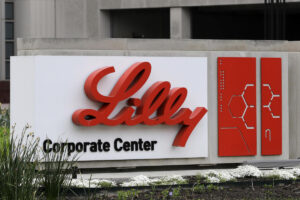Eli Lilly (LLY) recently provided an update that has caught the attention of investors and market analysts alike. Despite the company’s popular weight-loss drug Zepbound and its diabetes treatment Mounjaro falling short of Wall Street expectations for the fourth quarter, optimistic projections for 2025 revenue are emerging.
### Fourth Quarter Expectations: A Closer Look
In a recent report, Eli Lilly outlined its anticipated sales figures: approximately $3.5 billion for Mounjaro and $1.9 billion for Zepbound. This contrasts starkly with analyst forecasts, which estimated sales of $5.35 billion and $2.08 billion, respectively. CEO David Ricks addressed these discrepancies, attributing the revised guidance to a combination of slower growth than previously projected and lower-than-expected inventory levels at the end of the year.
“At the start of the quarter, we hoped for a faster acceleration of growth,” Ricks explained, indicating that they had mapped an aggressive expansion trajectory that did not materialize. Such adjustments highlight the volatile nature of pharmaceutical sales, which can be influenced by various factors, including regulatory issues, market competition, and consumer demand.
### Looking Ahead: Positive Projections for 2025
In a silver lining for investors, Lilly’s forecasts for 2025 are notably optimistic. The company expects revenue to range between $58 billion and $61 billion, surpassing the $58.52 billion anticipated by analysts. This projection suggests that, despite the setback in the fourth quarter, Eli Lilly may be positioning itself well in the long term.
This kind of forward thinking is crucial in the pharmaceutical industry, where new treatments and innovations can dramatically shift the revenue landscape. Investors should keep an eye on this space, as upcoming product launches and potential market expansions could propel Eli Lilly’s growth trajectory even further.
### The Broader Impact of Zepbound and Mounjaro
While the current sales expectations may seem disappointing, it’s important to note the broader implications of drugs like Zepbound and Mounjaro. Both medications have positioned themselves as revolutionary treatments in weight loss and diabetes management, addressing two of the most pressing health crises today. As public health continues to focus on obesity and related conditions, the long-term potential for demand is significant.
Moreover, Lilly’s ongoing research and development initiatives may yield additional products that further enhance the company’s competitive advantage in these high-demand markets.
### Conclusion: An Investment Worth Watching
For investors, the narrative surrounding Eli Lilly remains complicated yet promising. While the immediate data points cast some uncertainty, the company’s long-term focus and projections make it a stock worth keeping on your radar. As Eli Lilly navigates these challenges and opportunities, their journey will be fascinating to follow, especially for those invested in the future of health and wellness.
Stay tuned to Extreme Investor Network for ongoing updates and analysis that matter to your investment strategies in the health and pharmaceutical sectors.

